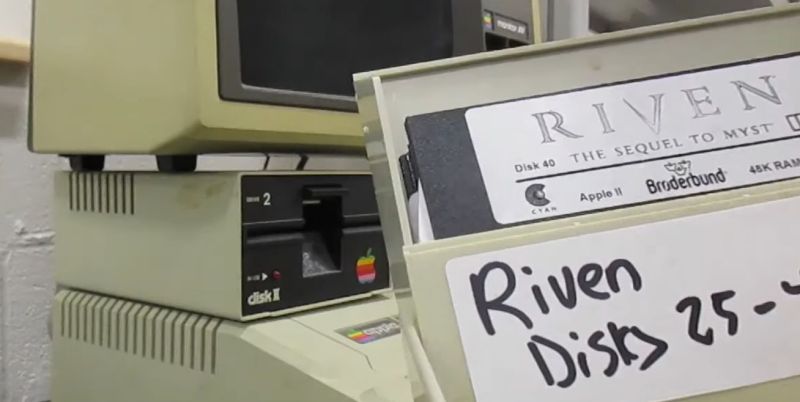Twenty years before the 1997 release of Riven – Cyan’s sequel to the critically acclaimed title Myst – a fruity company in California released the Apple II, a 6502-based microcomputer that would be produced until 1993. With the upcoming remake by Cyan of Riven into a fully 3D experience, [deater] found themselves wondering how much of the original game’s click-and-puzzle game would fit on a 140 kB floppy for the Apple II series of computers. Since Myst was able to be squeezed onto a mere three floppies and provide a reasonably playable version of the game on the Apple II, surely the same could be done for this sequel?
![The Maglev in the Apple II port of Riven. (Credit: [deater])](https://hackaday.com/wp-content/uploads/2024/05/riven_screen_maglev.png?w=400)
Although the ‘Disk 39’ in the video is currently the sole floppy, containing part of Dome Island and the Maglev, it is probably a fair assessment of how many 140 kB disks would be needed to port the entire game. Even with the downsampled graphics, [deater] reckons it would take on the order of hundreds of floppies to fit the whole thing.















Any word on a Pyst redux?
+1 😼
Today I was gifted a Sinclair SPerctum 48K that’s still got the shipping plastic film on the keyboard and I got to wondering how many tapes it would take to hold a modern OS like Ubuntu or Win 10
Depends. Do we measure tape lenght in number of orbits around moon? ;)
On such systems, data blocks back then had been written multiple times in a row to compensate for read errors on the not-so reliable cassette medium.
So the actual amount of data on physical tape might be a multiple to what’s being stored in digital tape images used by emulators.
Hehe. 85 kB on 5m of tape in those cartridges, 17 MB per kilometer.
Not actually that bad. You could fit an entire modern OS on a tape length less than a single low earth orbit. And it would take less than a two years to read it.
Back up to that find! Who still has that kicking around? What a score
What’s not being shown is footage from a composite video monitor of the era.
If being displayed on, say, a Commodore 1702 monitor with a 0.64 mm dot pitch, most of the pixelation would be gone.
The picture would be much more natural looking.
This here is more like a raw frame buffer dump.
I say “more like” because the Apple II is using NTSC artifact colors,
so some processing is done by either frame grabber or emulator etc.
[🔱]: apply agency here